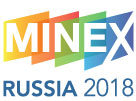- Home
- Esteban Hormazabal

Esteban Hormazabal
Managing Director, Rock mechanics principal
SRK Consulting (Chile)
Speaker profile
Esteban Hormazabal has 23 years of experience in geotechnical engineering, rock mechanics and geotechnical instrumentation for mining operations and civil engineering projects in Chile, Colombia, Mexico, Peru, Argentina, Uruguay, Russia and Kazakhstan.
He is an expert in analysis and geomechanical design of underground mining and surface excavations using 2D and 3D numerical modelling, stability analysis and slope design in open pits and waste dumps. He has been assistant professor of the Rock Mechanics Course at the Universidad Católica de Chile since 2013.
Presentation summary
Geotechnical Practices in Chilean Caving Mines
Caving mines in Chile started as conventional block caving operations hosted in secondary ore. This type of ore corresponds to rock masses that are of poor geotechnical quality (i.e., they are highly fractured rock masses) but that are relatively easy to cave. The first operations in primary ore, i.e., in rock masses of good geotechnical quality and therefore of low caveability, started during the eighties. The increment of stresses at the abutment of the undercuts (due to the use of the same mining layout as for secondary ore) affected the integrity of pillars at the extraction level. This led to a change in the mining method from the original block caving, to conventional panel caving, and later on, to advanced panel caving and then pre-undercut. This presentation shows some of the best practices for geotechnical design and operations of caving methods and the experience gained in Chilean caving mines.
